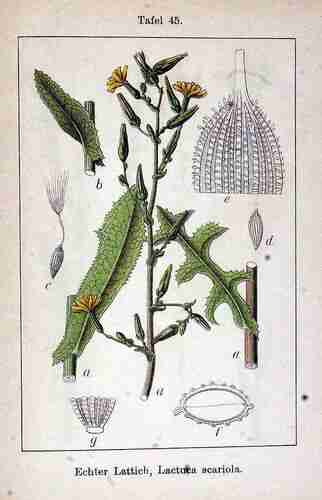! Nouveau site ici !
Vita > Plantae > Magnoliophyta > Magnoliopsida > Asterales >
Asteraceae > Lactuca
Lactuca serriola
(Laitue sauvage)


 | ** - ***
| ** - ***
Vita > Plantae > Magnoliophyta > Magnoliopsida > Asterales >
Asteraceae > Lactuca
Lactuca serriola
(Laitue sauvage)

Une herbe. Elle atteint une hauteur de 1 à 2 m. Il faut 2 ans pour terminer son cycle de vie. Il a une racine pivotante bien développée. Les feuilles ont des lobes profonds et sont vert bleuâtre avec une fl... (traduction automatique)
→suite
⬀
Le  donne accès au menu
donne accès au menu (c'est votre point de repère) 😊 ;
En dessous vous avez la classification, à partir de la vie (Vita, premier rang) jusqu'à la classe au dessus de la plante, dont vous trouvez ensuite le nom scientifique/botanique (latin) puis le nom commun (français), le cas échéant ;
C'est aussi un lien vers la fiche complète (tout comme la ✖, en bas à droite, et le +, en dessous de la description) ;
Vient alors l'illustration (ou ce qui la remplace, en attendant), la comestibilité :
Et en bas
⬂



